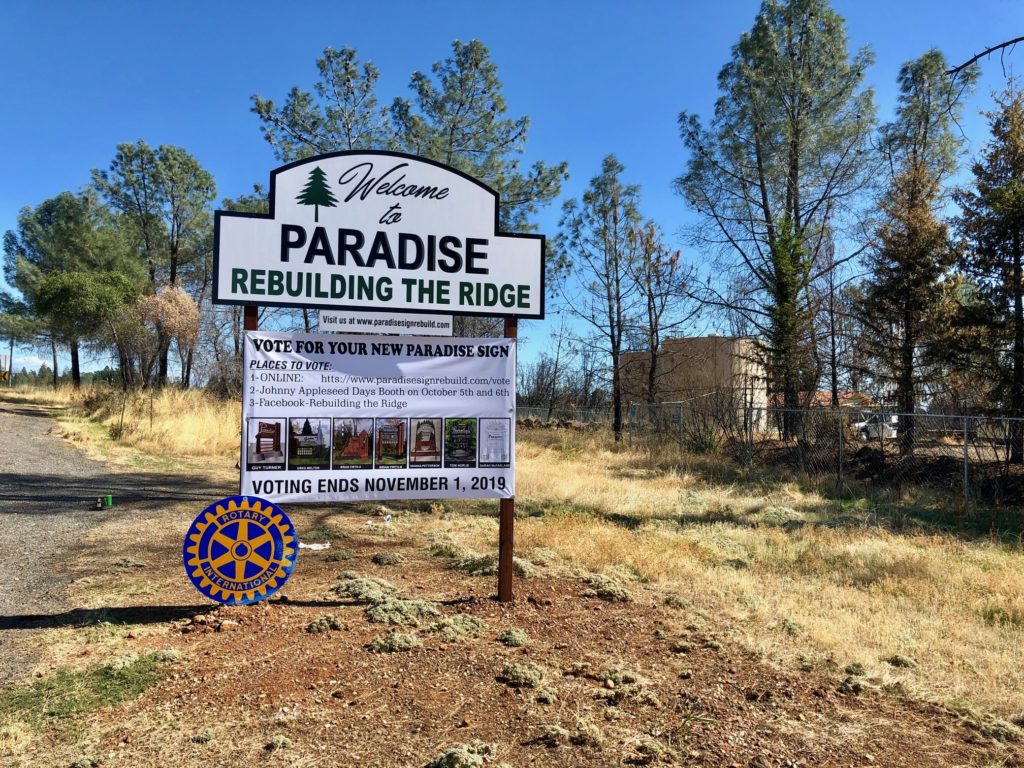
The 100-foot pine trees surrounding Ridgeview High School in Magalia are charred black. Towering over students and educators as they go about their school day, the pines serve as stark reminders of the destruction wrought by the Camp Fire only a year ago, in November 2018. And the freshly bulldozed dirt where neighborhoods of family homes once stood, now dotted with trailers and recreational vehicles, shows that this story of recovery is far from over.
For residents of Paradise and surrounding Butte County communities, every moment of the day can evoke memories of when the skies turned black with smoke and flames consumed nearly everything familiar. As efforts to rebuild continue, many of those scattered in the Camp Fire diaspora have returned to their communities — more than expected by Paradise Unified School District, where the high school alone had 300 more students than anticipated on the first day this year. But while the flames have long been extinguished, healing the minds and hearts of those impacted is a lengthy process.
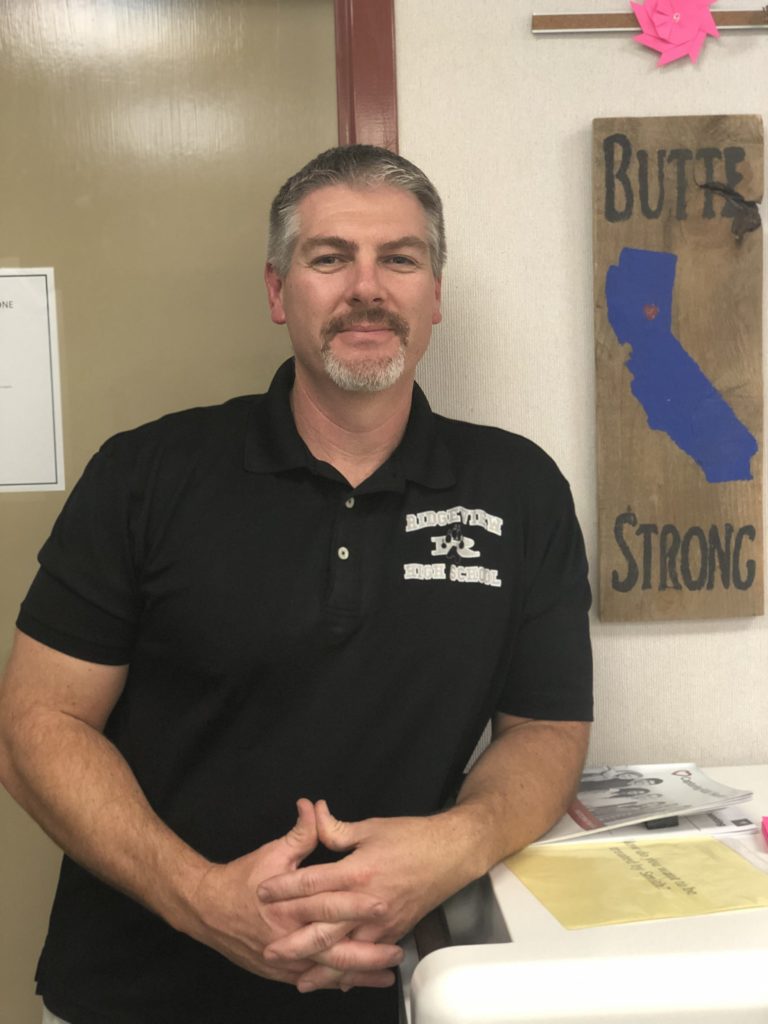
“Our kids are pretty angry. We’ve had lots of fights. They don’t know what to do with these emotions,” says David Smith, president of Teachers Association of Paradise (TAP). “When you’ve got 36 kids who’ve all been through this trauma, it’s hard to have a lot of learning going on. It’s nobody’s fault, but that’s the way it is.”
Golden Feather Teachers Association President Marianne Moore says the uncertainty of post-fire life is difficult for her fourth to sixth grade students. Although Concow Elementary School survived, its water system was damaged beyond repair. A temporary home for their school is just one in a long list of ways the fire is still impacting Moore’s students.
“Some of them are in mobile homes or live far outside of town. They’re grouchy and tired. One girl shouted out the other day, ‘My parents can’t afford anything!’ They lost what little they had,” she says. “We’re doing the best we can and it’s OK, but we need a lot.”
Special Report: Teaching Through Trauma
This is one of several stories that look at how educators are handling students with trauma. Read more:
Stories
- Teaching Students with Trauma: Practices that work
- A Culture of Compassion: What trauma-sensitive schools look like
- Phoenix Rising: Healing after natural disasters
- Crisis in Our Classrooms: Frightened, anxious immigrant students try to focus on education
- How COVID-19 Impacts the Undocumented
- Returning to Children’s Community Charter School in Paradise
- No Such Thing as a Bad Kid: Youth-care expert Charles D. Appelstein
- Taking Care of You, Too: Educator self-care is critical
- In Their Own Words: Helping students tell what they’ve lived
Resources
- How to help students after disaster
- Restorative practices that aid in trauma recovery
- Trauma Toolkit for Educators
- Helping our immigrant & undocumented students
- Know your rights with ICE
- Educator self-care tip sheet
- Defining trauma
- Symptoms of trauma
- Guidance from UC San Francisco’s HEARTS
Trauma lives in the nervous system
The impacts of natural disasters on communities are long-lasting and far-reaching. Whether it’s a flood, an earthquake, or one of the destructive wildfires that have ravaged California for the past five years, the trauma from the experience lasts much longer than the disaster itself. Trauma lives in the nervous system, not in the event, according to Fresno County school psychologist Deni Dayan. It’s like being in a car accident — the wreck is only for a moment, but it changes the way the nervous system reacts to being in a car every time after. For students and educators impacted by disasters, the simple act of going to school or work can cause traumatic responses.
“There is no healing in trauma unless you feel safe in your body,” Dayan says.
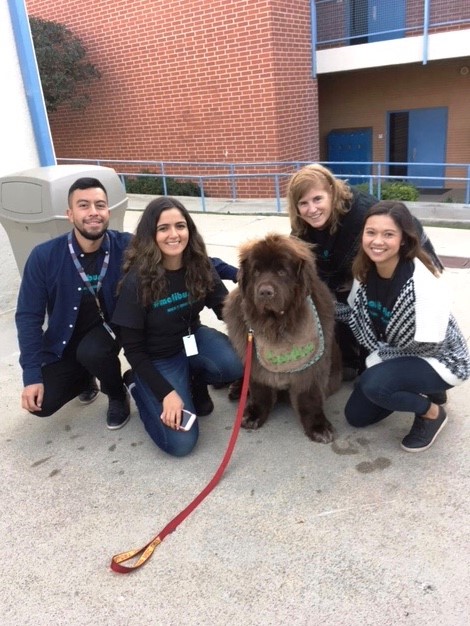
After the devastating Woolsey Fire chased students and school staff from their homes in 2018, Malibu High School psychologist Juliette Boewe compiled information to prepare district teachers and staff on what to expect from students when they returned to school, and practices to support them. Disasters can cause a wide variety of traumatic responses, from guilt, fear and worry to sadness, anger and shock, she says. While there is no normal reaction to loss and no timeline for recovery, changes in emotions and behaviors should be expected to last for at least six weeks.
Santa Monica High School mental health counseling coordinator Shuli Lotan, a member of Santa Monica-Malibu Classroom Teachers Association, was part of the support team Boewe assembled to help the several thousand affected students, educators and community members when school resumed after the Woolsey Fire. The team of school psychologists, counselors, mental health professionals and interns provided support to students and staff in “comfort rooms” at every school site, identified resources for those in need, and helped develop resiliency groups rooted in a trauma-focused cognitive behavior therapy model, among many other approaches.
“Everyone responds to trauma differently. We really have to keep our eyes open to be aware of what their needs are,” Lotan says. “Trauma stays in our minds and bodies.”
While the Santa Monica Malibu Unified School District had an emergency response plan, it wasn’t rooted in the reality of the kind of mental health needs for students, staff and the community that a disaster like the Woolsey Fire would create, Boewe says.
Boewe and her team sprang into action, checking in on the families of their students in special education and setting up systems of support at their school sites. A week before schools were set to reopen in Malibu (Malibu High was closed for five weeks), Boewe’s team trained staff at each Malibu school on how to talk about the fire, what to expect from their students, their own trauma, and how to best support their community through the trying time. With the district’s mental health staff on hand, educators participated in restorative “harm circles,” allowing a chance to share their stories and what they needed.
“These are our kids, our families and our colleagues. This has an impact on all of us,” says Boewe.
As the reopening approached, Boewe sent emails to all staff with self-care tips to make sure they were prepared for the emotions they would encounter. The day the mandatory evacuation was lifted and roads were opened, she visited the four schools in Malibu to survey the damage and identified the best routes for parents and staff to take to each.
“I needed to see what the kids would see when they returned to schools,” says Boewe, her voice trembling with emotion. “I wanted to make sure people knew ahead of time what to be prepared for because it could be traumatic.”
Supporting students and each other
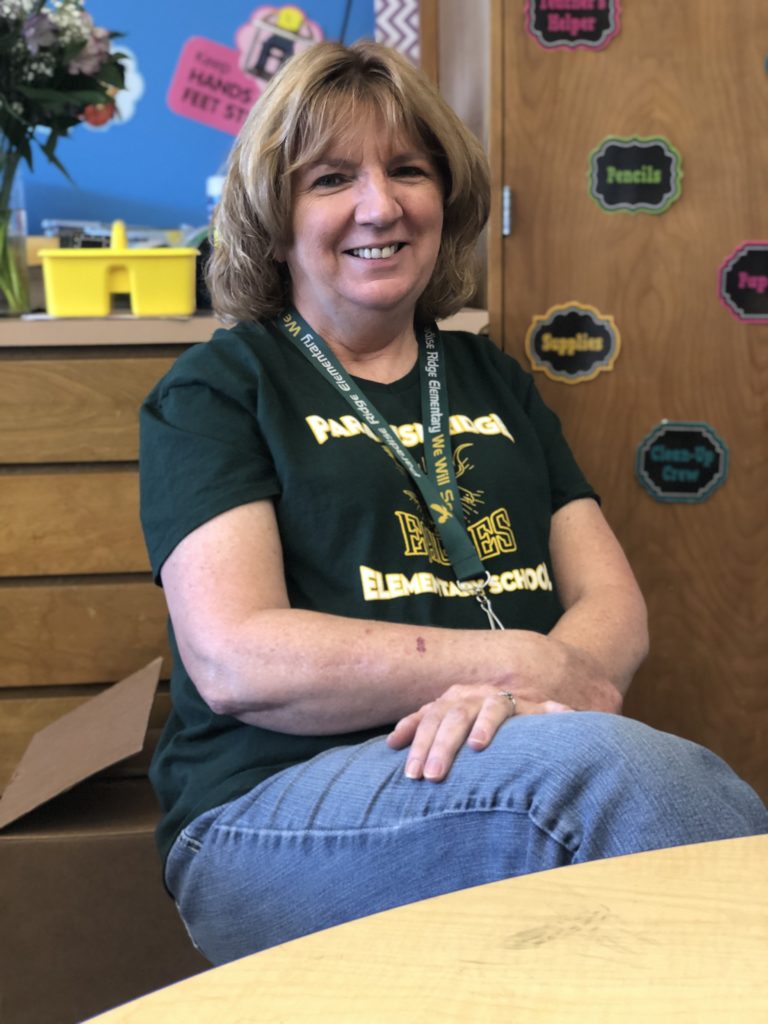
First grade teacher Debbie Woodmansee will never forget the day the Camp Fire approached Ponderosa Elementary School. As the smell of smoke drifted onto campus, there was an announcement that a wildfire had started nearby, but the school was not in danger. Less than an hour later, teachers and students fled for their lives as the raging inferno gave chase. Despite thick smoke filling the skies and blotting out the sun, the school’s smoke alarms never sounded. Miraculously, teachers and staff were able to evacuate every single student to safety.
Woodmansee and fellow TAP members Nicole Mattly and Shelly Kiefer now teach at the new Paradise Ridge Elementary School, which brings together students and staff from the destroyed Paradise Elementary and the damaged-beyond-repair Ponderosa Elementary. The new school is co-located at Paradise Intermediate School, where it faces challenges like toilets that are too high for primary students and classrooms lacking the necessary sinks for little learners who get messy.
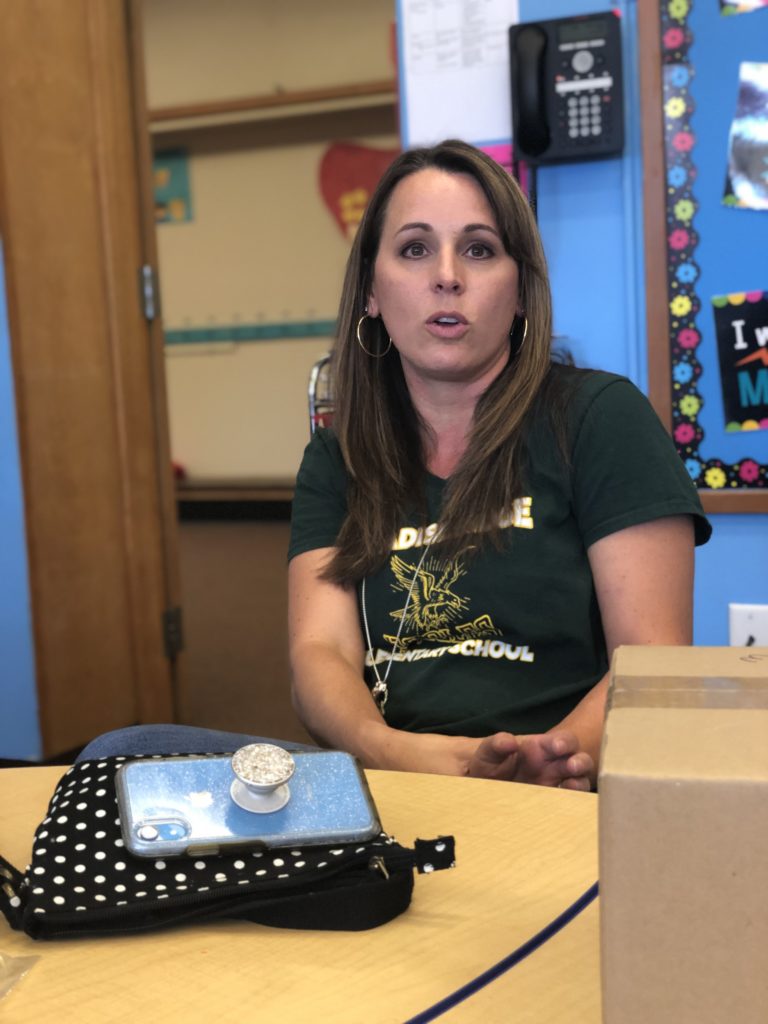
Instead of taking time off to process their own trauma, nearly every teacher at the new school worked through the summer getting classrooms ready for students. Kiefer, who lost her home as well as her classroom in the fire, says there wasn’t enough time to recreate everything that was lost. Things will never be the same in Paradise, she adds.
“It’s been survival. Kids and teachers are tired,” Kiefer says. “But I believe in our little town.”
One way they’ve been trying to help their young students is through the healing power of mindfulness. With the help of an Orinda-based organization called Mindful Littles, these educators lead their first and second graders through weekly mindfulness sessions, helping them learn how to identify their feelings and teaching them breathing techniques to calm stressful moments. Giving students the tools to provide themselves with inner space is critical when so many of them are impacted by having very little personal space of their own these days, according to Mattly.

“We’re seeing more anger than usual,” she says. “We teachers are helping all of our kids to learn how to process and get through it.”
When asked what they’re doing to take care of themselves and deal with their own trauma, the three teachers stare silently before nervous laughter tells a familiar story about educators putting their students’ needs first. Even if they wanted to take a personal day for self-care, Woodmansee says, another unexpected impact of the fire is a near-complete lack of substitute teachers, so any time off means the rest of their colleagues shoulder the load. For teachers who’ve been leaning on each other for a year now, that’s not acceptable.
“We’re all trying to take care of our basic needs and each other,” Kiefer says.
Fire season will always be difficult
As the familiar smell of wildfire smoke drifts onto campus, students and teachers stop like deer in headlights to check whether the threat has returned. The increasing prevalence of wildfires in California means hundreds of thousands of survivors whose trauma could be triggered during fire season in October and November.
Woodmansee says a recent nearby fire terrified the Paradise Ridge school community into tears.
In Malibu, the smell of smoke resulted in hundreds of students and teachers taking a mental health day. “We’ve got staff stressed out,” says Boewe of the smoke-filled skies. “Even I got triggered today.”
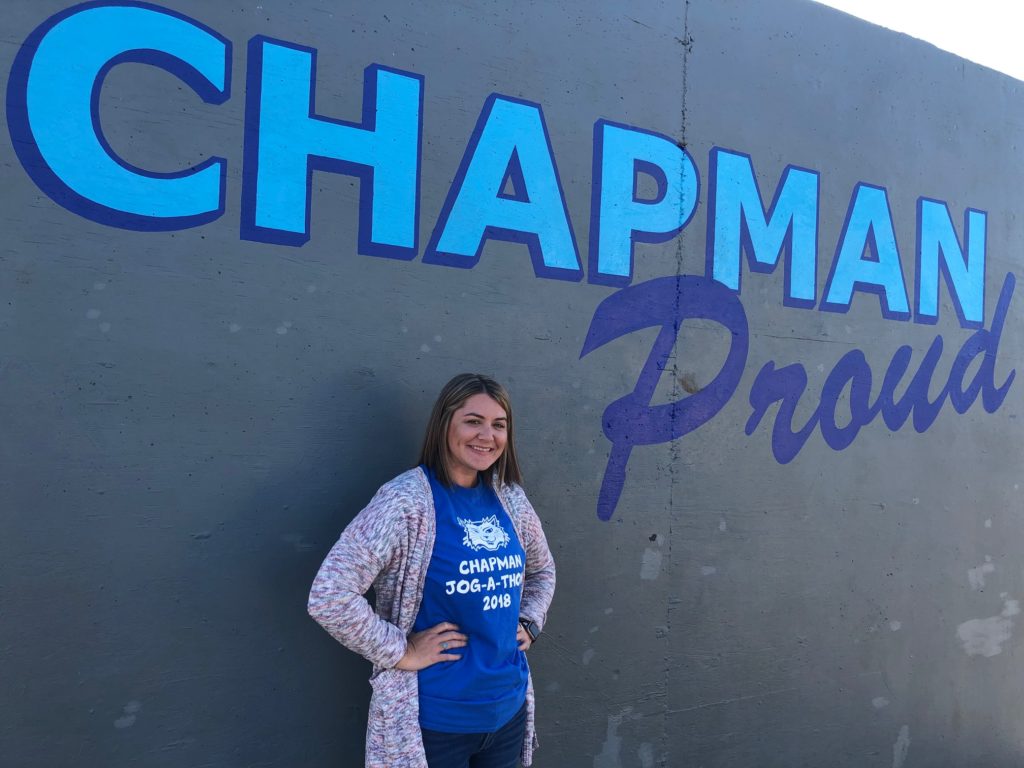
Students at Chapman Elementary School in Chico became concerned when they recently saw and smelled smoke. Chapman School counselor and Chico Unified Teachers Association member Ashley Trezza says class was in session when the Camp Fire sparked, and her students are still on edge.
“It’s just reassuring kids and letting them know they’re safe,” she says, adding that long-term resources are necessary to truly help students experience post-traumatic growth. “The needs aren’t temporary. What’s really going to help is having people in schools providing counseling services for at least three years.”
TAP’s Smith and other educators say that while the Paradise and Chico districts offer counseling, unfortunately, the current massive demand exceeds even the increased resources that are available.
The fire, evacuation and slow recovery effort have impacted nearby communities like Chico that weren’t directly affected. In Chico Unified, classrooms bulged as they provided temporary homes for evacuated students. Trezza says one fifth grade class had 39 students, and lack of space became an issue throughout the district.
“It was a big mess at the beginning of the year,” she says. “Our classrooms are full.”
The warm embrace of CTA family
As these communities rebuild and recover, a common refrain is how much the thoughts and support of their CTA family meant during very difficult times. And even as these educators continue efforts that go far beyond helping students in the classroom, they lament being unable to thank everyone who wrote a message, donated their time or sent supplies. “We get so drained trying to work our way through this,” says Smith. “Getting those positive vibes from fellow CTA members and teachers really means something.”
The Discussion 0 comments Post a Comment